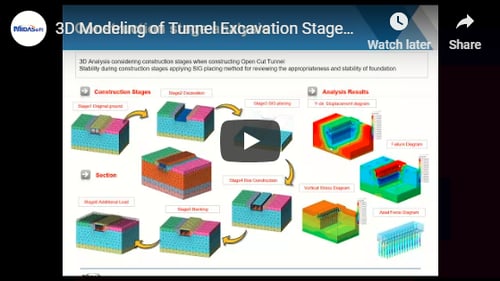Midas GTS NX: Training: Liquefaction Analysis of Bridge Abutment with UBC SAND model

Author: Angel Francisco Martinez
Publish Date: 27 Dec, 2021
Summary
The response of pile foundations to lateral soil deformation induced by liquefaction during an earthquake is a key design consideration in seismically active regions. Liquefaction can increase the cost of bridge and building projects if not properly and timely identified prior to construction. In this training, a 2D finite-element (FE) model of a bridge abutment with piles is developed and used to identify and quantify the liquefaction regions and potential reductions
in the bridge foundation due to lateral spreading. The training will focus on how to set up the material model UBC Sand as well as how to set up special dynamic boundary, load conditions, and time steps for liquefaction analysis. It will conclude on how to use GTS NX advance features to inspection the structural demands as well as identifying the liquefied regions over the scope of the earthquake.

Learning Objectives
Definition of advance parameters for Liquefaction material UBC Sand
Meshing of 2D soil layers and 1D piles
Application of Dynamic Free Field Boundary Condition
Import of seismic acceleration function
Time history analysis case set with time steps and initial stresses consideration
Key soil and pile results review including liquefaction region identification (Pore Pressure Ratio, Normalized Max Stress Ratio)

Key Points
UBC SAND
Non Linear Time History Liquefaction Analysis
Free Field Boundary Conditions
Time History Functions
Bridge Abutment Modeling
Pile Foundation Design
Presentation Slides
| |
Speaker : Angel Francisco Martinez Category : Geotechnical Software : midas GTS NX Date : 2017-08-08 |






Add a Comment